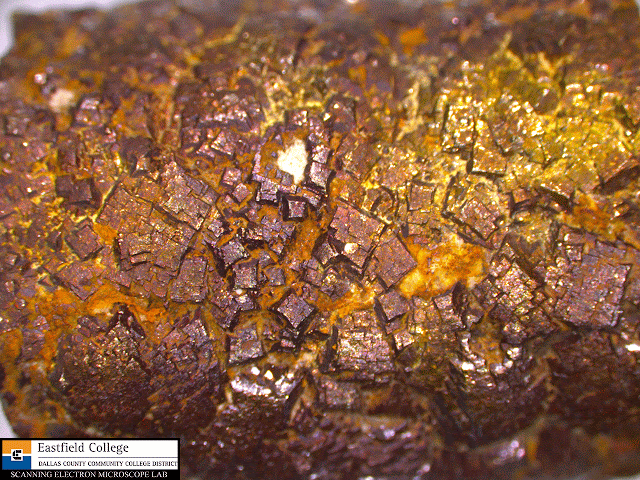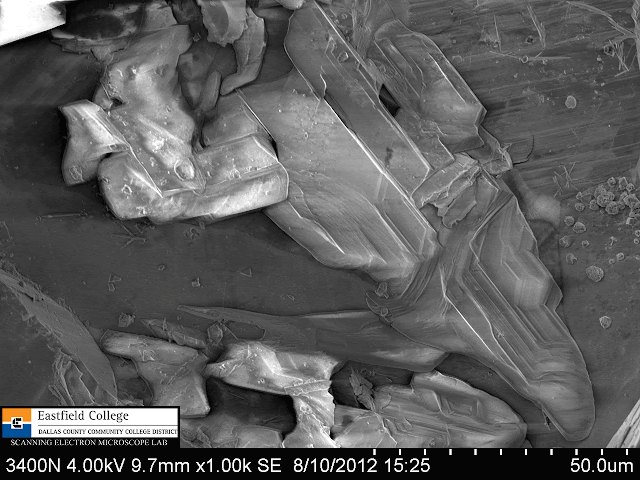Even if you aren't interested in the biology of spiders, please check out the images in this blog posting. These small and often loathed creatures have some of the most remarkable anatomy you will find on the planet, and they are in the most mundane places - like around the porch light in my backyard.
In my previous blog (August 20, 2012) I showed images of a small Theridiid - a cobweb spider. The images in this posting were made with the scanning electron microscope here at Eastfield College.
 |
| Prosoma 178x
Several hairs on the prosoma and one obvious sensory pit.
|
 |
| Sensory Pit 3,500x Small sensory pit on dorsal surface of prosoma. Distance between marks on scale = 1 micron. |
 |
| PME 503x Spiders do not have compound eyes like insects. This image is of the PME or median eye on the posterior eye row. |
 |
| Dorsal Opisthosoma 320x Image of the peak of the opisthosoma or abdomen. |
 |
| Side portrait 47x |
 |
| ALE/PLE Dyad
400x
The dyad is composed of the ALE and the PLE - the lateral eye of the anterior eye row and the lateral eye of the posterior eye row.
|
 |
| Ventral Abdomen - Epigastric Furrow 60x |
 |
| Epigynum 804x |
 |
| Anus and Posterior Spinnerets 471x Posterior lateral and median spinnerets at top of image. |
 |
| Close up of Median Posterior Spinnerets 1,090x |
 |
| Portrait 19x I wanted to image the spider head on so I draped its front pair of legs over the mount. |
 |
| Theridiid Head Shot 46x |
 |
| Eye Arrangement 230x Image of the two row of eyes on this spider - the anterior eye row (AER) and the posterior eye row (PER). |
 |
| Close up of Posterior Median Eyes (PME) 470x Note the sensory pits above the eyes. |
Now for some basic spider leg anatomy!
This study focuses on the second leg (simply because it was in the proper position).
 |
| Coxa and Trochanter 219x The coxa is indicated by the red arrow and the trochanter by the blue arrow. |
 |
| Femur 70x |
 |
| Patella (Knee) 190x |
 |
| Tibia 80x |
 |
| Close up of hairs on tibia 422x |
 |
| Spiderling Portrait 120x Distance between marks on scale = 40 microns. This guy is little! |
 |
| Egg Sac Silk 750x |
















































